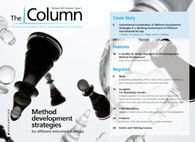Bruker to acquire Michrom
Bruker is set to acquire Michrom Bioresources, a Californian company that provides LC instrumentation, accessories and consumables for applications in the life science, chemical and applied markets.
Bruker is set to acquire Michrom Bioresources, a Californian company that provides LC instrumentation, accessories and consumables for applications in the life science, chemical and applied markets.
Commenting on the agreement, Collin D’Silva, president of Bruker’s Chemical and Applied Markets division, said “Michrom’s broad portfolio of novel technologies and high-performance products is highly complementary to our mass spectrometry products. In particular, their new high duty-cycle nanoflow UHPLC platform, along with their LC–MS interface, will provide our customers with significant gains in throughput, sensitivity and robustness for proteomics and other nano and capillary flow LC–MS applications.”
Michrom’s president Kerry Nugent expects the transaction to make Michrom’s products more widely available to global customers seeking these key novel technologies. He commented: “With Bruker’s manufacturing infrastructure and well-developed global distribution channels, we will be able to make greater strides to provide customers with advanced analytical solutions that embody technologies based on our expertise in biochemistry and microfluidics. I am very excited that the significant potential of our new technologies is now closer to being realized by more discerning customers.”
For more information visit www.bruker.com and www.michrom.com
This story originally appeared in The Column. Click here to view that issue.













